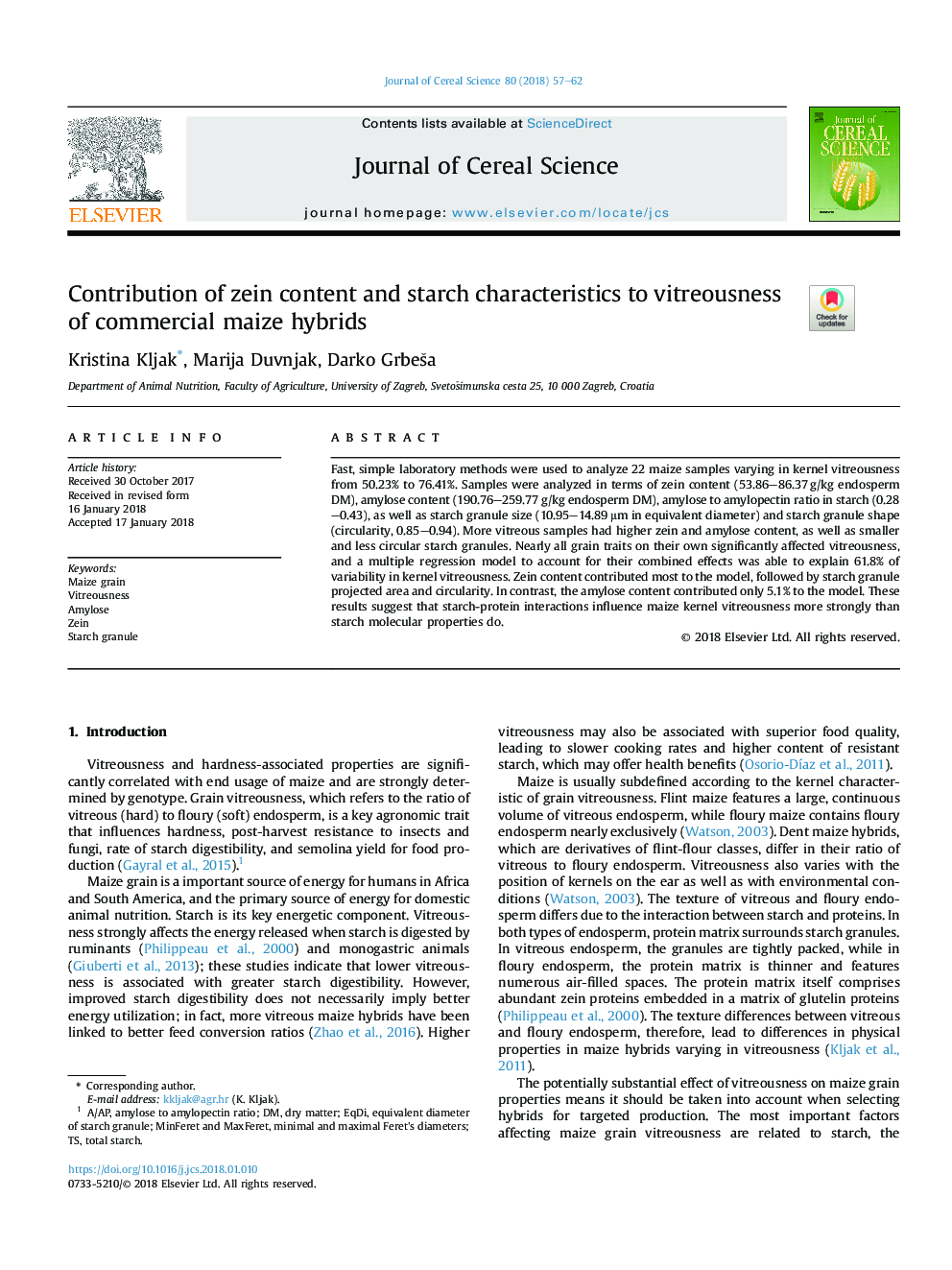| Article ID | Journal | Published Year | Pages | File Type |
|---|---|---|---|---|
| 8881377 | Journal of Cereal Science | 2018 | 6 Pages |
Abstract
Fast, simple laboratory methods were used to analyze 22 maize samples varying in kernel vitreousness from 50.23% to 76.41%. Samples were analyzed in terms of zein content (53.86-86.37â¯g/kg endosperm DM), amylose content (190.76-259.77â¯g/kg endosperm DM), amylose to amylopectin ratio in starch (0.28-0.43), as well as starch granule size (10.95-14.89â¯Î¼m in equivalent diameter) and starch granule shape (circularity, 0.85-0.94). More vitreous samples had higher zein and amylose content, as well as smaller and less circular starch granules. Nearly all grain traits on their own significantly affected vitreousness, and a multiple regression model to account for their combined effects was able to explain 61.8% of variability in kernel vitreousness. Zein content contributed most to the model, followed by starch granule projected area and circularity. In contrast, the amylose content contributed only 5.1% to the model. These results suggest that starch-protein interactions influence maize kernel vitreousness more strongly than starch molecular properties do.
Related Topics
Life Sciences
Agricultural and Biological Sciences
Agronomy and Crop Science
Authors
Kristina Kljak, Marija Duvnjak, Darko Grbeša,
